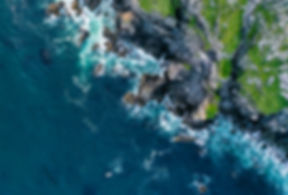

SUSTAINABLE MANAGEMENT
The North Pacific Fishery Management Council (NPFMC) has a long and successful track record of using science-based, sustainable fisheries management for fisheries operating in the 1 million square nautical mile Exclusive Economic Zone (EEZ) off Alaska. The foundation for NPFMC fishery management is preservation of healthy, productive marine ecosystems in the Gulf of Alaska, Bering Sea, Aleutian Islands, and the Arctic. As a result nearly all of Alaska’s federal fisheries are certified as sustainable by the Marine Stewardship Council and the Responsible Fisheries Management Certification Program.
Conservation areas, with associated fishery closures, already exist on over 65% of the Alaska EEZ to conserve habitat, sustain fisheries and coastal communities, and protect marine mammals. These conservation measures were carefully established using the Council’s public process to solicit input from all stakeholders in order to protect ecosystem productivity and integrity while still providing for sustainable fisheries and viable coastal fishing communities. Given recent sudden shifts in ocean conditions, it is vital that these areas can be modified under the Council process as new scientific information becomes available, fish stocks shift their distribution, the environment changes, or other reasons as needed to adapt to unforeseen events.

THE FUTURE OF FISHING
AWTA members are committed to the future of our fisheries and health of our oceans
MANAGEMENT
The Gulf of Alaska trawl fishery is managed primarily by the North Pacific Fisheries Management Council, one of eight councils across the country established to manage the nation's fisheries. GOA trawl is primarily managed as a race-for-fish, with the exception of the Central Gulf of Alaska Rockfish Program which is a rationalized catch share program with cooperatives.
Operating under a race-for-fish comes with challenges: decreased safety for crews and vessels, decreased predictability for landings and revenue, disincentives to share information amongst the fleet, and decreased quality since every boat is racing to get the fish. COVID introduced additional uncertainty along with extreme market fluctuations and business interruptions up and down the supply chain.
Catch share programs have proven to be better fishery management tools that allows flexibility and accountability in fisheries worldwide. Catch share programs give fishermen flexibility to fish under safer conditions, a cooperative structure that encourages communication and cooperation, and slows the pace of the fishery to allow potential for higher value production at the plant level.
FOR MORE INFORMATION ON CATCH SHARES CLICK HERE
FOR MORE INFORMATION ON THE COUNCIL AND COUNCIL PROCESSES CLICK HERE
FOR MORE INFORMATION ON THE CENTRAL GOA ROCKFISH PROGRAM CLICK HERE

"Keeping the Gulf of Alaska fisheries healthy and sustainable is a top priority for AWTA and we are proud of the fishing gear improvements and technological advancements we helped develop."
-Rebecca Skinner, Executive Director AWTA
RESEARCH
The AWTA fleet works hard alongside the National Marine Fisheries Service, Alaska Groundfish Data Bank, biologists, and at-sea observers to ensure that the best data is available for fisheries managers, lawmakers, and the "Boots on Deck" fishermen to make the most informed decisions regarding our fisheries.

Cooperative Research Projects AWTA members have participated in
-
Halibut Excluders
-
Salmon Excluders
-
Electronic Monitoring
-
Alternative Catch Monitoring
-
Trawl Sweep Lift Modification
BYCATCH
Fishery management in Alaska is recognized as a one of the best examples of sustainable fisheries management and protected species conservation in the world, but even Alaskan fishermen sometimes catch and discard fish they do not want, cannot sell, or are not allowed to keep. These discarded fish are known collectively as bycatch.
The Magnuson-Stevens Fishery Conservation and Management Act (MSA) defines bycatch as fish that are harvested in a fishery, but that are not sold or kept for personal use. MSA requires that bycatch be minimized to the extent practicable. In the Alaska Region, the North Pacific Fishery Management Council and NOAA Fisheries have adopted measures to limit the catch of species taken incidentally in groundfish fisheries, and reduce discards, which includes both economic and regulatory discards. Under the Improved Retention/Improved Utilization (IRIU) Program fishermen are prohibited from discarding pollock, Pacific cod and shallow-water flatfish, up to regulatory limits, after which they are required to discard.
-
Regulatory discards are fish that are caught but discarded because regulations do not allow fishermen to retain the fish. For example, strictly enforced trip limits associated with Stellar Sea Lion protection measures in the GOA require trawlers to discard at sea any pollock over 300,000 pounds per trip.
-
Economic discards are fish that are discarded because they are of undesirable size, sex, or quality, or for other economic reasons. Under IRIU requirements there are very limited opportunities for GOA trawlers to discard unwanted catch solely for economic reasons.
A subcategory of bycatch is Prohibited Species Catch, or PSC. Certain species are designated as “prohibited species” in the fishery management plans because they are the target of other, fully utilized domestic fisheries. Prohibited species catch (PSC) in Alaska include Pacific halibut, Pacific herring, Pacific salmon, steelhead trout, king crab, and Tanner crab. However, PSC can also take the form of a legally harvestable groundfish species for which TAC has been achieved that is caught incidentally in groundfish fisheries (GOA Groundfish Fishery Management Plan).
For example, Pacific Ocean Perch (POP) is a target allocated species in the Central Gulf of Alaska Rockfish Program, and it can also be caught as incidental catch throughout the year subject to Maximum Retainable Allowance (MRA) limits. If MRAs are exceeded then any catch of Pacific Ocean Perch over that percentage must be discarded as regulatory discard, and if the POP Total Allowable Catch is exceeded then it is considered a PSC species. So, depending on the timing and harvest of POP, it is considered a target species, an incidental species, bycatch or PSC.
